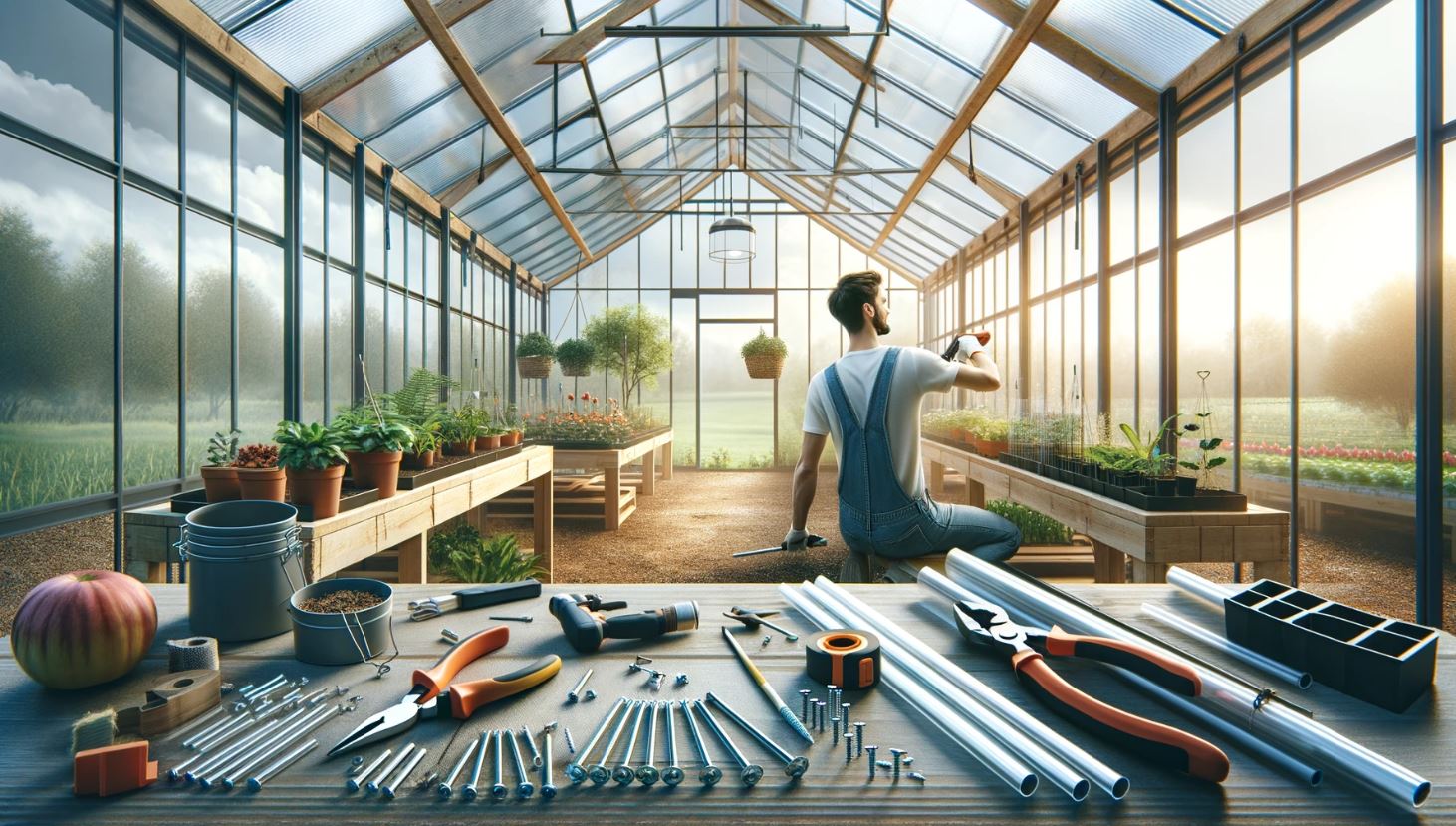Securing polycarbonate panels is crucial to building a durable and weather-resistant greenhouse. We will walk you through best practices for obtaining polycarbonate roofing panels in a greenhouse, ensuring your structure is a hospitable environment for your plants in any season.
What Are Polycarbonate Panels?
Polycarbonate panels are strong, lightweight, and transparent thermoplastic sheets widely used in construction and outdoor applications. They are famous for composite greenhouse structures due to their lightweight, high-impact resistance and excellent light transmission.
They come in various types, including twin-wall polycarbonate sheets for added insulation and durability and bronze polycarbonate sheets with a unique tint for controlled light diffusion and added UV protection.
How to Install Polycarbonate Greenhouse Panels
Let's examine how to install polycarbonate panels effectively in your greenhouse. Suppose you're tackling this as a DIY project. Knowing how to cut polycarbonate roofing accurately is essential to ensure each panel fits perfectly and performs well in your setup.
Tools and Materials
- Polycarbonate panels
- Glazing bars
- Screws and anchors
- Sealant
- Measuring tape and marker
- Protective gear
Step 1: Measure and cut the panels.
Measure the area of your greenhouse where you'll be installing the panels. Cut the polycarbonate panels to size, ensuring they fit perfectly in the designated space.
Step 2: Prepare the frame.
Ensure the frame is sturdy and clean. For a polycarbonate greenhouse, check that the frame is designed to hold polycarbonate panels for a polycarbonate greenhouse. Inspect the metal frames for rust and apply an anti-rust treatment if needed. Ensure the frame dimensions align with the polycarbonate panels to avoid gaps or an uneven fit. Reinforce any loose joints and add support bars if your greenhouse will be exposed to strong winds or heavy snowfall.
Step 3: Install glazing bars.
Attach glazing bars to the frame to support and secure the panels. Ensure the glazing bars are evenly spaced and properly aligned. These will prevent the panels from bending or breaking and add structural stability.
Step 4: Place the panels.
Carefully position the polycarbonate panels onto the frame, aligning them with the glazing bars.
Ensure there are no gaps between the panels and the frame, which can lead to heat loss and instability.
Step 5: Secure the panels.
Use screws and anchors to secure the panels to the glazing bars and frame.
Apply sealant along the edges of the panels to create an airtight and watertight seal. This will enhance moisture resistance and boost the polycarbonate roof insulation against external weather.
Step 6: Perform final checks.
Inspect the installation to ensure all panels are securely fastened and sealed. Make any necessary adjustments to guarantee the panels are firmly in place.
How to Attach Polycarbonate Panels to Wood
Attaching polycarbonate panels to a wooden frame requires careful planning to ensure stability, effective sealing, and long-lasting weather resistance.
Step 1: Prepare the wooden frame.
Ensure the wood is clean, dry, and smooth to create a strong foundation for the polycarbonate panels. Seal or paint the wood if exposed to the elements to prevent rotting over time.
Step 2: Pre-drill the polycarbonate panels.
Use a drill bit slightly larger than the screw diameter to allow room for thermal expansion. Space the holes about 18 inches apart along the panel edges. For thicker panels, place the holes closer together for added stability.
Step 3: Position and secure the panels.
Place the polycarbonate panels on the wooden frame, ensuring they align correctly. Use neoprene or rubber-backed washers to cushion the screws and prevent damage to the panels. Fasten each panel with stainless steel or coated wood screws, placing them through the pre-drilled holes into the wood.
Step 4: Seal the edges.
Apply a compatible, UV-resistant sealant along the panel edges to ensure a watertight seal. Polyurethane or silicone sealants work well. Overlap the panels slightly (around 1.27 cm or 0.5 inches) to improve water resistance and keep the structure secure against wind and weather.
Step 5: Allow for expansion gaps.
Leave a small gap between the panels and around the screws to accommodate expansion and contraction caused by temperature changes. This prevents warping and cracking over time.
Complementary Products for Your Greenhouse
Composite cladding improves the stability and appearance of your greenhouse, adding an extra layer of protection and insulation. For a more efficient gardening experience, add other greenhouse accessories, such as shelving and temperature control systems.
Safety Tips for Effective Installation
- Wear safety equipment: Gather all necessary tools and wear appropriate safety gear, such as gloves and goggles, to protect against sharp edges or debris.
- Use the right tools: Before beginning the installation, ensure you have the correct tools and materials to avoid unnecessary delays or mistakes that could compromise your safety or the structure's effectiveness.
- Avoid over-tightening screws: Tighten the screws just enough to hold the panels securely in place. Over-tightening can lead to cracking or damaging the polycarbonate, impacting its durability.
- Secure the ladder: If you're working at a significant height, always stabilise your ladders or scaffolding. Never overreach; instead, reposition your setup for safe access to each area.
- Perform regular maintenance: After installation, regularly check the panels, screws, and glazing bars for wear or damage. Promptly address any issues to keep your greenhouse structurally sound and safe over time.
Contact us at Trade Warehouse, where we're always ready to help you with your gardening needs.
Frequently Asked Questions
What are polycarbonate panels used for in greenhouses?
Polycarbonate panels are used for greenhouse roofing and walls because they are lightweight, durable, and allow good light transmission.
How do I secure polycarbonate panels to a frame?
Use screws, anchors, and glazing bars to secure panels, and apply sealant along the edges to ensure a watertight seal.
Can polycarbonate panels withstand harsh weather?
Polycarbonate panels resist impact, UV rays, and temperature changes when properly installed, making them ideal for outdoor use.
Why is it important to leave expansion gaps when installing polycarbonate panels?
Allowing small gaps prevents warping or cracking due to thermal expansion and contraction from temperature changes.
What maintenance is needed for polycarbonate panels?
Regularly check panels, screws, and glazing bars for wear, and reapply sealant if necessary to keep the greenhouse weather resistant.

